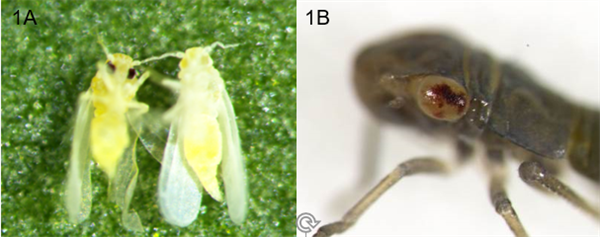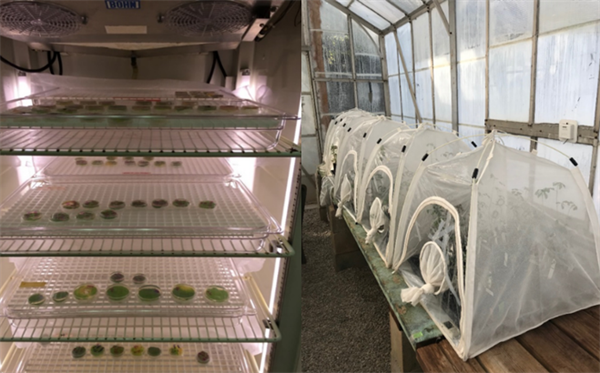Low Cost and Scalable Sap Feeding Insect Rearing and Gene Editing System
Background
The whitefly, Bemisia tabaci, is a significant pest of global agriculture. It is invasive and is present in tropical, subtropical and temperate regions throughout the world. It damages plants by feeding on their phloem and transmitting plant pathogenic viruses. Whiteflies and other sap-feeding insects have developed resistance to chemical insecticides and new control strategies such as gene drive for pest control are needed to combat their ongoing spread.
Brief Description
Profs. Peter Atkinson and Linda Walling at UCR have developed an in vitro rearing system on 3.5-cm and 6-cm leaf disc plates that support egg to adult development in as little as 19 days. This system translates to a small-footprint, cost-effective rearing process, which can be industrialized, automated and applied to other sap-feeding insects. Each plate may be used as an independent experiment or a mini-colony of a new whitefly genetic strain.
Creating genetically modified whiteflies and other sap-feeding insects for genetic manipulation involves microinjecting embryos (eggs), which remain attached to excised leaf discs, which have been pretreated to remain viable throughout the whitefly life cycle. This technology can be used to maintain colonies of whitefly in a more cost-effective way than existing approaches.
In addition, this technology has been used to generate the first genetic mutants in the glassy-winged sharpshooter, Homalodisca vitripennis, a significant pest of Californian viticulture and thus opening the possibility of developing new strategies for its control and elimination.

Fig. 1A shows a wild-type male whitefly and a mutant white male whitefly, which was generated by CRISPR/Cas9 mutagenesis using the leaf-disc injection and rearing protocols.
Fig. 1 B shows a mosaic-eyed glassy-winged sharpshooter that was generated using the same technology.

Fig. 2 Each incubator (left) can hold up to 700 experiments/mini-whitefly colonies compared to the bugdorm (right), which houses one colony/experiment per tent. One incubator would replace ~11 biosafety level 2 (BSL2) greenhouses.
Suggested uses
- This new insect-rearing system may be used to efficiently create genetically modified insects for insect pest control and research purposes.
Patent Status
| Country | Type | Number | Dated | Case |
| United States Of America | Issued Patent | 12,245,576 | 03/11/2025 | 2018-123 |
Additional Patent Pending
Contact
- Rekha Chawla
- rekha.chawla@ucr.edu
- tel: View Phone Number.
Other Information
Keywords
sap-feeding insects, whitefly, pest control, rearing system, genetic modification
